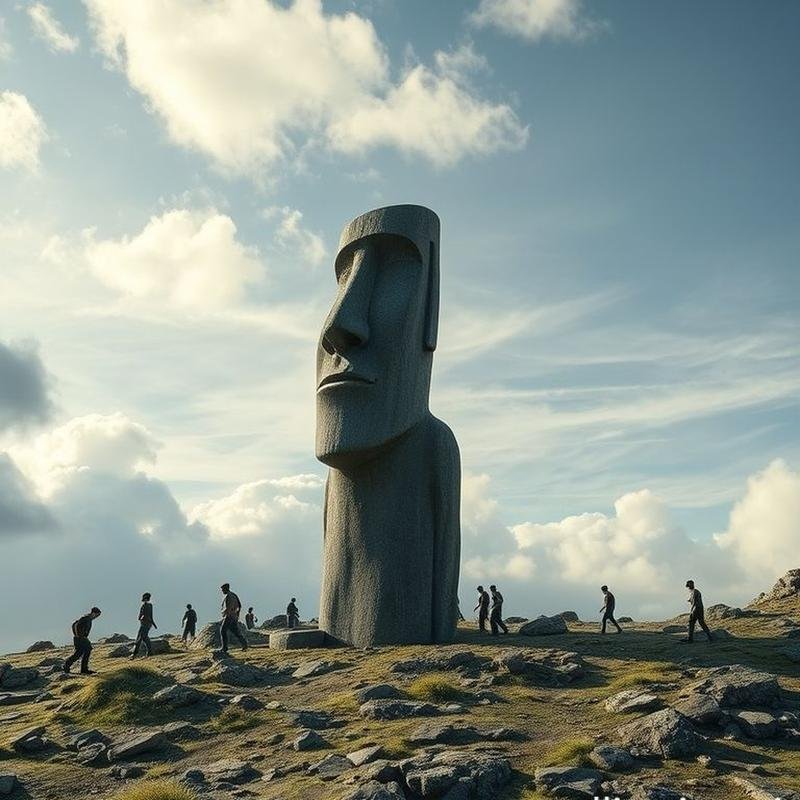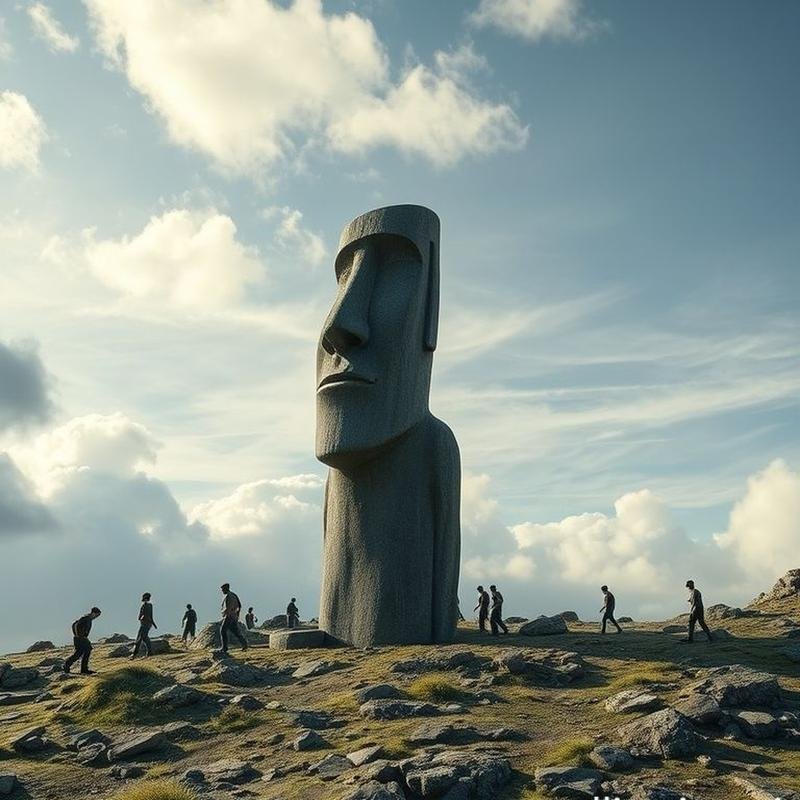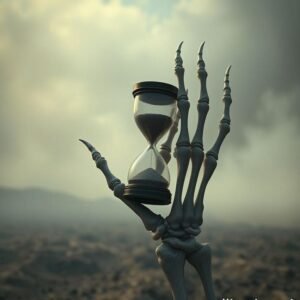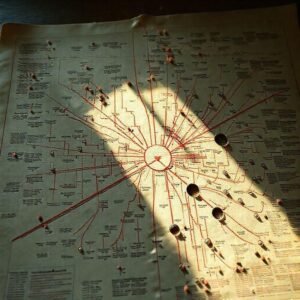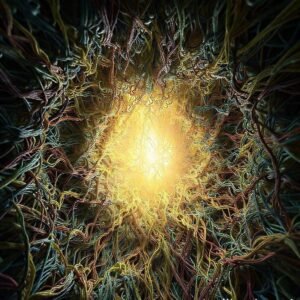Easter Island: Did It Self-Destruct? 🗿 A Tale of a Lost Civilization 📜
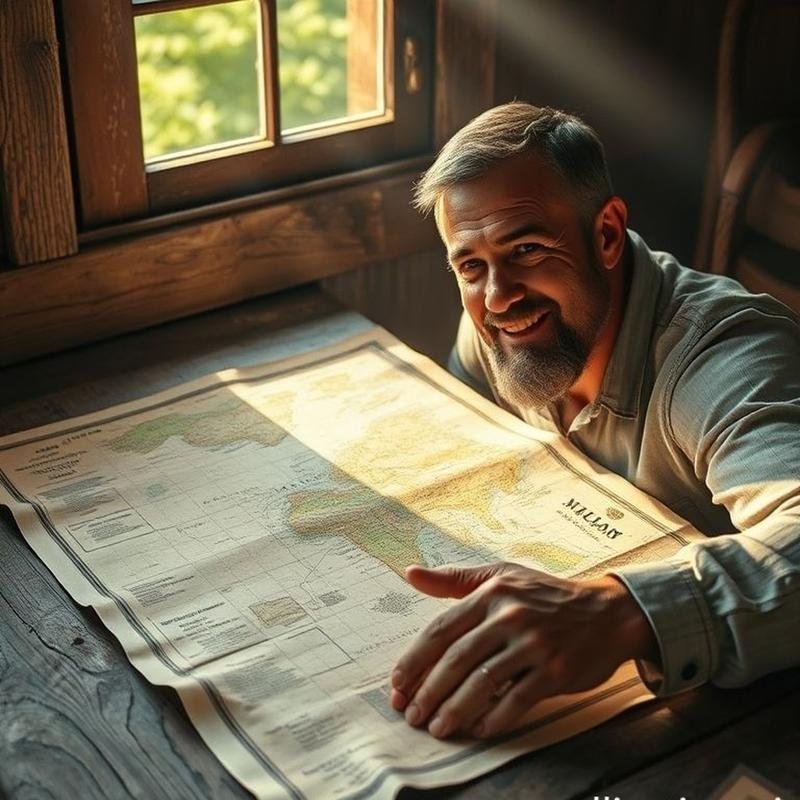
Easter Island Collapse: A Lost Civilization’s Story
What drove a people to carve a thousand colossal statues, only to completely devastate their own environment? It wasn’t simply an ecological collapse as we previously thought. In this episode, we unveil a more complex narrative, one where internal conflicts, severe climatic factors, and even potential pre-European contact conspired to bring the enigmatic civilization of Easter Island to its demise. Join us on a journey to this isolated land, where we reveal a story never told before, a story that transcends the statues to reach the very core of the struggle for survival.
Before we continue this compelling exploration, share your initial interpretations in the comments section. And don’t forget to subscribe to our documentary channel to receive further fascinating insights.
The Unfolding Narrative of Rapa Nui
While we once believed the demise of the Rapa Nui civilization was solely due to environmental collapse, a deeper and more complex narrative is now unfolding. Let’s revisit the pivotal moment when these people decided to transform raw stone into enduring works of art. Imagine the heart of Easter Island, the Rano Raraku quarry, a colossal mine carved into compressed volcanic ash, the tuff, where hundreds of Moai statues lie in various stages of completion. Here, the epic of the carving begins. A small team, consisting of four to six sculptors, armed with simple stone axes, toki, made of hard basalt, engaged in arduous work that could take an entire year to complete a single statue. Thousands of these abandoned axes silently testify to this immense effort.
The Astonishing Transportation of the Moai
But how did they manage to transport these stone giants, averaging 14 tons in weight, with some reaching 86 tons, for distances that could extend up to 18 kilometers across the island? Archaeological experiments have revealed an astonishingly innovative method of rocking the statues back and forth, using ropes and wooden platforms, or perhaps tree trunks, in a delicate process requiring exceptional coordination and skill. This ingenuity, this absolute dedication to accomplishing a seemingly impossible task, evokes in us a mixture of profound admiration and sincere respect.
Czech archaeologist Pavel Pavel proposed the fascinating “walking” theory. Imagine teams of strong men, sturdy ropes, and a giant statue swaying gently back and forth, as if walking, step by step. In 2012, a team led by Terry Hunt and Carl Lipo successfully moved a small statue in this remarkable way, proving the feasibility of this compelling theory. But what about the heavier Moai statues, those stone giants? Were wooden sledges and rollers the solution, or is there another secret? Evidence suggests the existence of carefully paved stone roads across the island, supporting this idea. Imagine the trees that were felled, not only to build the sledges, but perhaps also to pave the way for the movement of these giants, facilitating their journey across the island. The perplexing paradox lies here: the lack of trees, perhaps exacerbated by the transportation of the Moai, may be part of the larger puzzle of their civilization’s collapse, a missing link in a perplexing story.
Beyond Environmental Collapse: A More Nuanced Story
But was felling the last tree the final blow? Did a single axe really bring down an entire civilization? Recent studies reveal that the story is much more nuanced. Natural forest fires, often overlooked, played a significant role in soil degradation, suggesting that intensive agriculture may have been just one chapter in a broader environmental saga. But the environment is only part of the perplexing puzzle. Archaeological evidence reveals internal conflicts, a miniature civil war that erupted between rival clans, evidenced by trenches and defensive walls, built desperately to protect what remained of dwindling resources. Analysis of ancient pollen shows greater plant diversity than we thought, a more resilient ecosystem than we imagined, struggling to survive. DNA studies reveal severe suffering from malnutrition and a severe protein deficiency. Did increasing despair lead to more violent conflicts? Stable isotope analyses in the bones of the ancient inhabitants tell us that they relied not only on agriculture, but also on fish and dolphins, in a desperate attempt to diversify food sources. The discovery of specialized stone tools, perhaps used laboriously to manage scarce water, shows desperate attempts to adapt to deteriorating conditions.
The Enigma of Early Contact
But what if this apparent isolation was just an illusion? What if this remote island, before the arrival of Europeans, had contact with other distant civilizations? Theories of early contact suggest hidden connections, potential interactions across the vast expanse of the Pacific Ocean. Striking similarities in construction techniques, linking Easter Island to distant lands, raise compelling questions: Did knowledge travel across the oceans, or did human ingenuity flourish independently in disparate locations? The sweet potato, a crop originating in South America, found its way to Polynesia long before Columbus arrived. How was this possible? Did strong ocean currents carry it, or did ancient mariners, of whom we know nothing, traverse these vast distances? DNA studies of chickens reveal a common lineage between Chile and Polynesia, another piece of evidence added to the collection of intriguing possibilities. But this evidence, despite its allure, remains inconclusive, theories yearning to become irrefutable facts. If these bold hypotheses are correct, they would fundamentally rewrite the history of Easter Island. And early contact may have had unexpected environmental impacts, with new species of plants and animals challenging the delicate balance of the fragile ecosystem. It may also have had a profound impact on the social fabric, with new ideas and technologies challenging long-standing traditions. Could this external interaction be the beginning of the end?
Internal Conflicts and the Dark Chapter of Rapa Nui
Beyond the potential influences of the outside world, the island whispers tales of bitter internal conflict, a dark chapter in the history of Rapa Nui. Archaeological evidence reveals a horrifying escalation in violence. Examination of stone tools shows a sharp increase in the use of obsidian weapons, a grim indicator of escalating conflicts. Similarly, pollen studies tell a similar story, a catastrophic decline in native forests, replaced by grasses, damning evidence of excessive deforestation and soil degradation. The echoes of civil war resonate in folk tales, a bloody conflict between the Long Ears and the Short Ears, reaching its horrific climax in the Poike Ditch. The discovered skeletons do not lie, signs of malnutrition and violent injuries tell of increasing despair. Even the towering Moai were not spared from this wrath; some were toppled and defaced, perhaps as desperate acts of sabotage in the midst of these internal conflicts. Then comes the most disturbing evidence: traces of cannibalism at some sites, evidence of utter desperation and a catastrophic shortage of resources. But perhaps the gradual cessation of Moai construction around 1600 AD, and the complete cessation by the 18th century, is the most compelling evidence of the collapse of central authority, and the loss of the ability to organize large-scale projects. These are not just data; they are silent cries from the past, evoking deep concern and a tragic understanding of the fate of Rapa Nui.
The Environmental Catastrophe and its Consequences
By the 17th century, the scene was horrific in every sense of the word. The forests that once covered the island in a green cloak had almost vanished. Widespread deforestation, a process that began centuries ago, left the land bare and exposed, vulnerable to erosion. The soil, once fertile and rich, turned into a barren wasteland, leading to a catastrophic decline in agricultural productivity. The disappearance of trees was not just an unfortunate aesthetic loss, but a devastating blow to the Rapa Nui way of life. At least six species of trees became extinct forever, including a giant palm tree that was essential for transporting the majestic Moai statues. Without wood, the construction of boats, which were vital for sustenance, ceased, hindering fishing, that vital source of indispensable protein. Seabirds, which found safe haven in the trees for their nests, were no longer able to find shelter, leading to a precipitous decline in their numbers, and the loss of a vital food source. Faced with this devastating environmental disaster, the inhabitants of Rapa Nui were forced to adapt with all their might. Archaeological evidence clearly indicates that they began to rely increasingly on sweet potato cultivation as a staple food. But even this exceptional resilience was not enough to avert the inevitable fate. As the forests receded, the winds of change blew fiercely across the island, winds that carried with them the seeds of bitter regret. Today, we look at Easter Island not just as the ruins of a vanished civilization, but as a stark mirror reflecting our potential future, a future that threatens us all.
A Cautionary Tale and a Glimmer of Hope
The collapse of Rapa Nui is not just a story about an environmental disaster, but a harsh lesson, a cautionary tale about the fragile and precarious balance between humanity and nature. The horrific population decline from fifteen thousand to less than three thousand is not just a statistical figure, but a resounding cry that shakes the conscience, reminding us of the dire consequences of resource depletion. It was not just the removal of trees, but a systematic destruction of the foundations of an entire society, the very fabric of their lives. Indeed, Jared Diamond points to Easter Island as a classic example of a society that destroyed itself. Are we not doing the same now, but on a terrifying global scale? Are we not obligated to ourselves and future generations to learn deeply from the tragic mistakes of the past? Despite the utter darkness that loomed over the island, there remains a faint glimmer of hope. The inhabitants of Rapa Nui demonstrated remarkable resilience, and an extraordinary ability to adapt even in the most dire and challenging conditions. Their innovative agricultural techniques, and their tireless efforts to survive, testify to the strength of the human spirit.
Unanswered Questions and Enduring Mysteries
But even with all these discoveries, Easter Island remains a mystery shrouded in ambiguity. Who exactly are the people of Rapa Nui? Are they descended from a lineage of adventurous Polynesian seafarers, or do their roots extend further, to intertwine with the continent of South America? And how were they able to move those majestic statues, the giant Moai, across the vast expanses of the island? Did they harness the power of wooden sledges, or sturdy ropes, or an ingenious combination of ancient technologies? The true purpose of the Moai statues remains a question without a definitive answer. Were they embodiments of revered ancestors, or expressions of powerful

